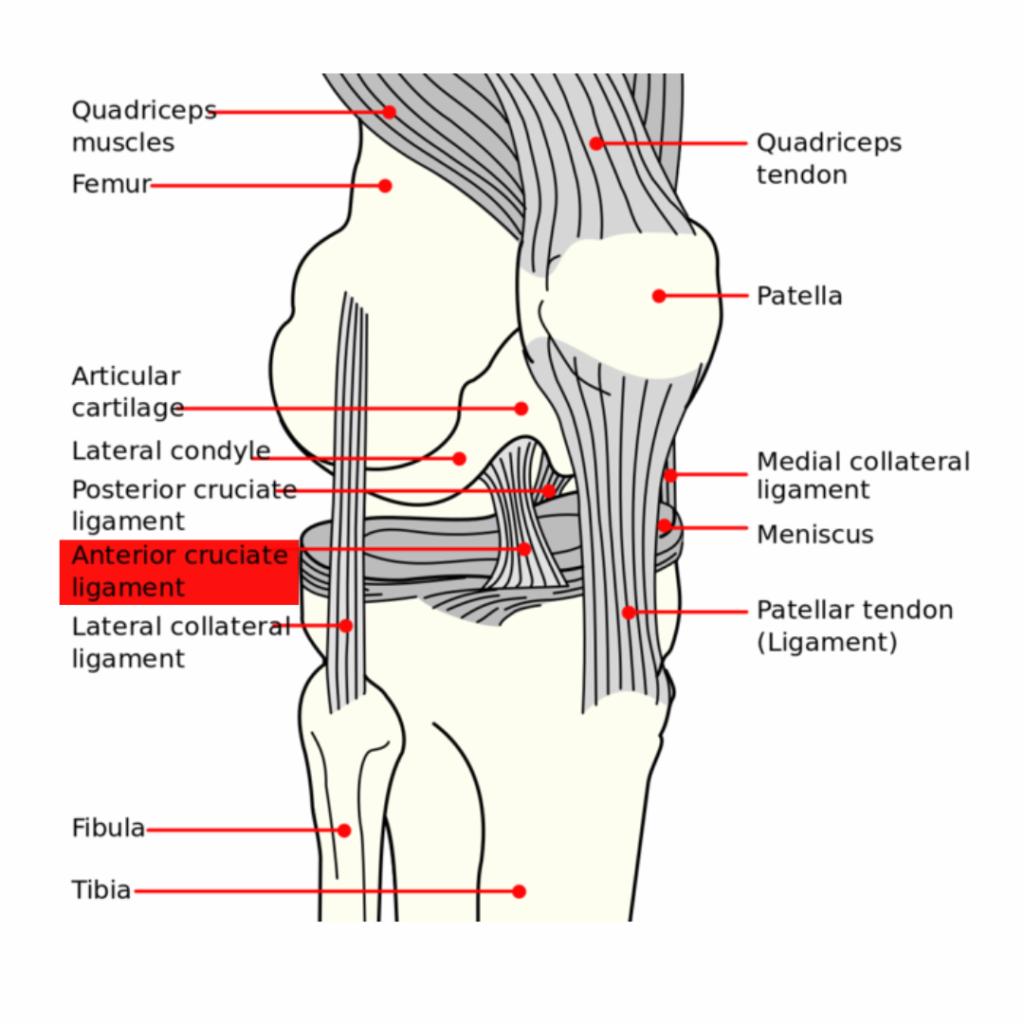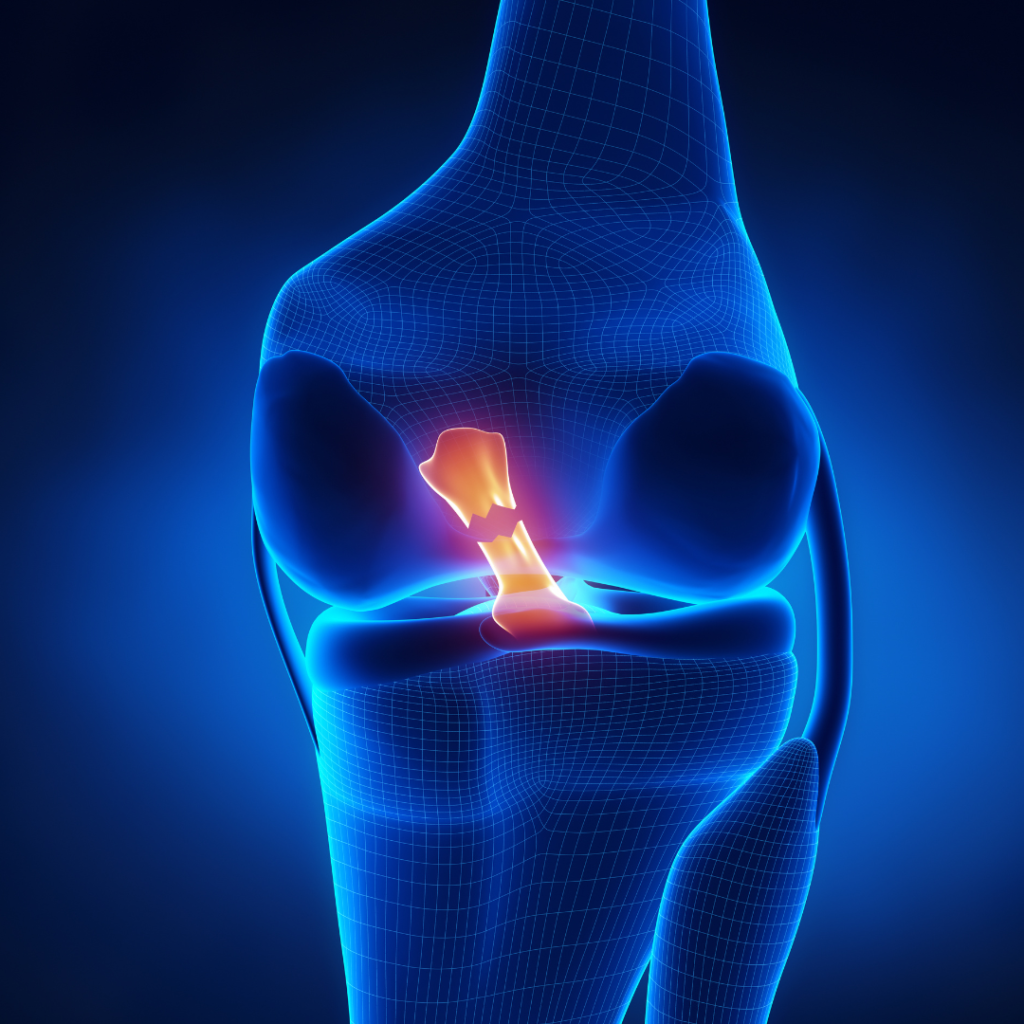What is the anterior cruciate ligament?

A set of four ligaments are involved in maintaining the knee: two collateral ligaments, which are located on either side of the knee and provide lateral stability, and two cruciate ligaments (because they cross inside the joint), which provide front-to-back stability of the knee.
The anterior cruciate ligament (ACL) is one of the two cruciate ligaments in the knee joint. It is located in the centre of the joint and connects the thigh bone (femur) to the leg bone (tibia).
The ACL is responsible for stabilising the knee by preventing the leg from sliding too far forward in relation to the thigh.
The ACL is essential in many sports, particularly those involving pivot movements such as football, basketball and skiing.
What is an anterior cruciate ligament rupture?

A rupture of the anterior cruciate ligament (ACL) is a serious knee injury that occurs when the anterior cruciate ligament tears or ruptures. This injury is common in athletes who play sports such as football, basketball, skiing and handball.
ACL injuries can lead to pain, swelling, instability, loss of function of the knee and difficulty walking or standing with feelings of looseness.
It is important to consult an orthopaedic surgeon to discuss appropriate treatment options for ACL injuries, regardless of age.
Treatment
Treatment of ACL injuries depends on the severity of the injury, associated symptoms, age and the patient’s functional expectations.
Early treatment can help prevent long-term complications and improve functional results. Early diagnosis means that a tailored rehabilitation program can be set up quickly to restore functional independence and avoid major muscle atrophy. This treatment can be definitive if a conservative approach is chosen, or preparatory with a view to ACL plasty.
In some cases, surgery may be recommended to repair or reconstruct the ACL. Rehabilitation and physiotherapy are also important elements of treatment to help strengthen and restore normal knee function.
There are several surgical options for restoring stability after a tear. The choice of operation will be discussed with your surgeon on a case-by-case basis, depending in particular on your sporting and professional activities, the presence of any associated injuries and your anatomy.
It is generally proposed to replace the torn ligament with a graft – this is known as an anterior cruciate ligament “plasty”
It is often possible to live without an anterior cruciate ligament. Conservative treatment involving re-education and effective muscle strengthening can often be enough to stabilise the knee, provided that the other structures important to its stability are preserved and solid.
If the pain is acute immediately after the trauma that ruptured the ligament, once the acute and inflammatory phase has passed, the pain gradually subsides.
If the knee is not sufficiently stable in relation to the stresses to which it is subjected, in the medium term there is a risk of re-injury and worsening of the damage. And in the longer term, the onset of premature osteoarthritis.
Based on scientific evidence, we generally recommend surgical treatment for young, active people, especially if they play pivot sports such as tennis, football, volleyball or skiing.